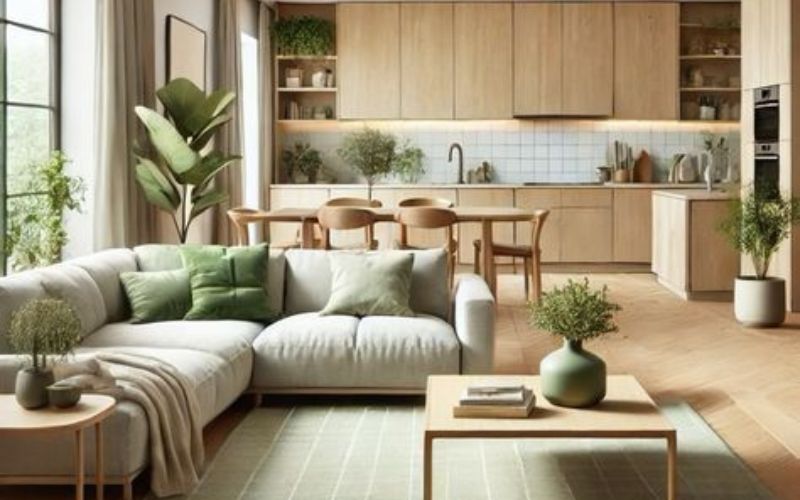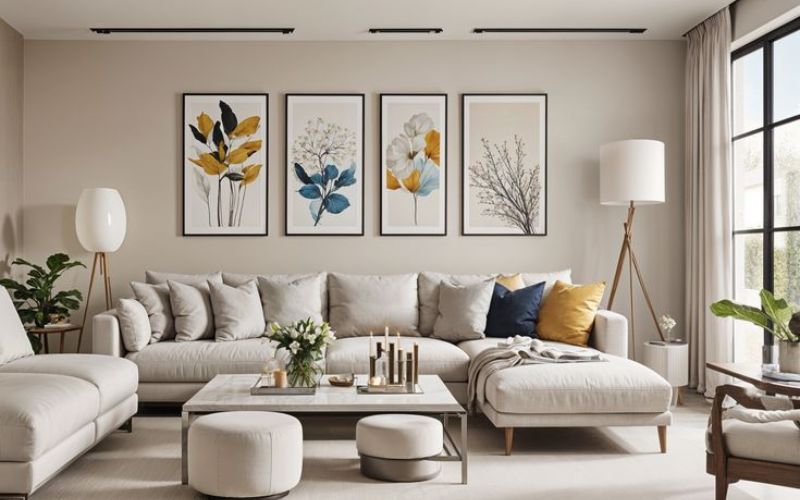
Designing a beautiful interior is about more than just picking the right furniture or colors—it’s about how everything works together in harmony. One of the key, often overlooked, principles that bring a room together is visual weight in interior design.
Whether you’re furnishing a villa in Dubai or styling a city apartment, understanding visual weight helps you create furniture balance, visual harmony, and better use of scale and proportion in your home.
Let’s break it down in a way that’s easy to understand—and even easier to use.
🔗 Related: Discover How Texture Shapes Interior Style
What Is Visual Weight in Interior Design?
Visual weight refers to how “heavy” or “light” an object appears to the eye. It’s not about the physical weight, but about how much attention something grabs in a space.
Think of a large, dark-colored sofa. Even if it’s made from lightweight material, your eye sees it as heavy because of its size, color, and form. Compare that to a slim, see-through acrylic chair—it feels airy and light.
Visual weight can come from:
- Size – Bigger items feel heavier
- Color – Darker shades carry more visual weight
- Texture – Rough or bold textures feel heavier
- Placement – High or off-balance placements can feel heavier
- Complexity – Intricate shapes or busy patterns catch the eye more
Once you know this, you can begin balancing your space intentionally.
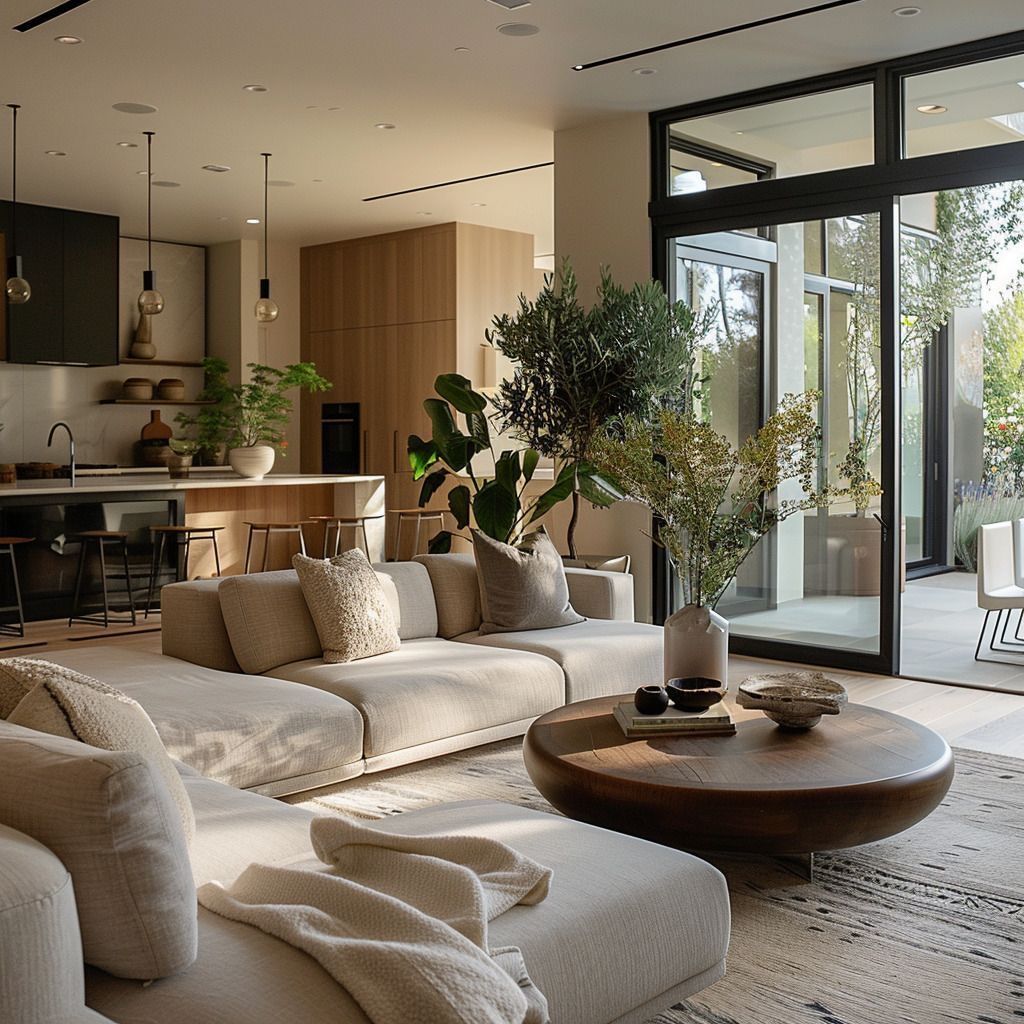
Why Visual Balance Matters
A room with poor visual weight distribution can feel awkward, chaotic, or “off,” even if everything inside it is high-end.
But a room that’s balanced—even with mixed styles—feels natural, relaxed, and complete.
Benefits of Good Visual Weight:
- Creates visual harmony
- Enhances traffic flow
- Makes small spaces feel bigger
- Helps you style around architectural features (like beams or windows)
- Supports the overall scale and proportion of the room
Understanding Furniture Balance
Symmetrical vs. Asymmetrical Balance
Symmetrical balance is when both sides of a space mirror each other. For example, two identical chairs flanking a fireplace.
Asymmetrical balance is more dynamic—like pairing a large sofa with two small chairs. It works when the pieces still feel balanced in weight, even if they’re different in shape.
At Sierra Contracting, we often use asymmetry in modern Dubai homes to create flow and keep things visually interesting.
Anchoring the Room
Heavy visual items (like a large rug or cabinet) are best placed low and centered. They serve as the “anchor” and give stability to your furniture layout.
Lighter items, like art or small decor, can then be layered around for balance.
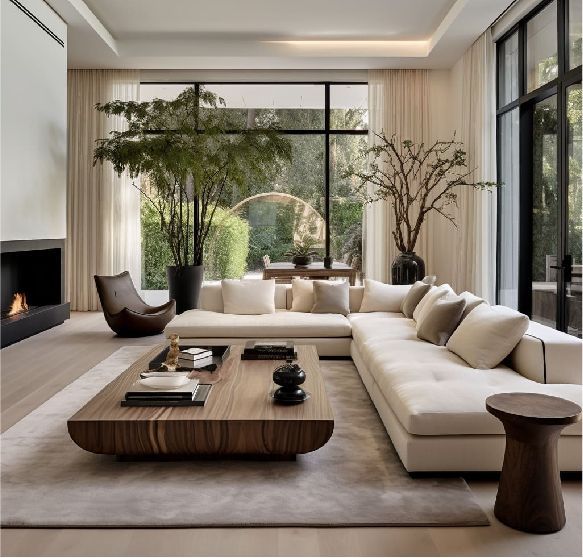
Applying Scale and Proportion
These two principles work hand-in-hand with visual weight.
- Scale is how the size of one item compares to the room overall.
- Proportion is how items relate in size to one another.
Tips to Get It Right:
- In a large room, go for large-scale furniture. Tiny pieces will feel lost.
- Match artwork size to the wall. A tiny frame on a big wall feels unbalanced.
- Don’t overload one side of a room with bulky items—distribute the weight.
- Mix small and large pieces in a way that feels intentional, not random.
How Color and Texture Affect Visual Weight
Color plays a huge role in how heavy or light something appears.
- Dark colors (navy, black, deep browns) draw the eye and feel heavier.
- Light colors (beige, white, pastels) recede into the space and feel lighter.
Texture matters too. A textured fabric like velvet or boucle feels richer and heavier than smooth linen or glass.
Using these differences helps you layer a space without making it feel crowded.
Tip: If you want to balance a dark sofa on one side of the room, try a bold rug or dark artwork on the opposite wall.
Creating Visual Harmony in Real Life
Let’s go beyond theory and look at practical visual harmony strategies you can try:
Living Room
- Pair a bold coffee table with a lighter sofa to keep the center grounded.
- Use throw pillows and lamps to echo color across the room.
- Add a large mirror opposite a bulky TV cabinet to balance heaviness.
Bedroom
- If you have a statement headboard, keep bedside tables minimal.
- Balance heavy drapes with light bed linens or a pale area rug.
- Keep wall art proportionate to your bed size.
Dining Area
- A large table needs matching chairs with weight (not thin, spindly ones).
- Balance a heavy buffet table with lighter artwork or a narrow mirror.
- Use a light fixture that draws the eye upward for vertical balance.
When to Break the Rules
Design isn’t always about following rules—it’s about knowing when and how to bend them.
Sometimes, a single bold piece (a chandelier or sculptural sofa) becomes a focal point and doesn’t need to be “balanced.” The rest of the room should, however, support it—not compete with it.
This is where intentional imbalance creates drama and focus. Use it sparingly.
Visual Weight in Dubai Interior Projects
At Sierra Contracting, we work on a wide variety of homes across Dubai—from minimalist apartments to luxurious villas.
When we talk with clients about furniture selection, decor placement, or even ceiling treatments, we always consider visual weight.
Because in hot climates like Dubai, airy, open designs are popular—but they still need grounding elements to avoid feeling flat or empty.
We use scale and proportion, along with smart use of materials, to create that perfect balance between elegance and comfort.
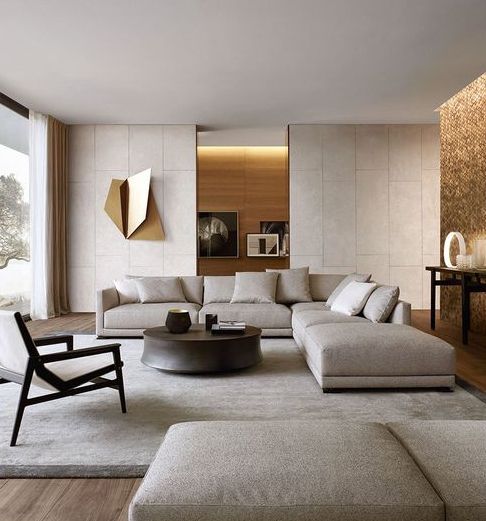
🔗 See how texture plays a role in our interiors
Final Thoughts
Designing a room isn’t just about choosing pretty things—it’s about how they interact visually. Understanding visual weight in interior design helps you make smarter choices that result in a more peaceful, stylish, and cohesive home.
By paying attention to furniture balance, visual harmony, and scale and proportion, you’ll transform any space—from grand villas to compact city apartments—into a place that simply feels right.
Need expert help putting these ideas into action?
Sierra Contracting is ready to assist with personalized interior design, layout consultation, and full home renovations across Dubai.

